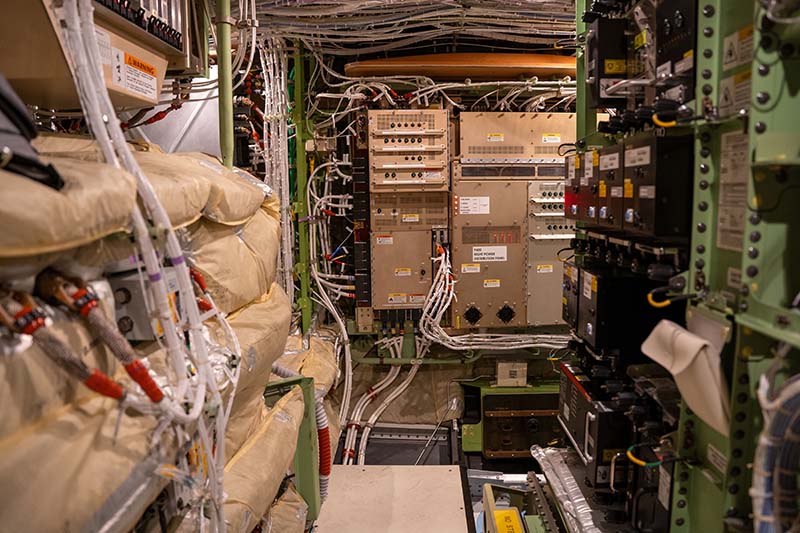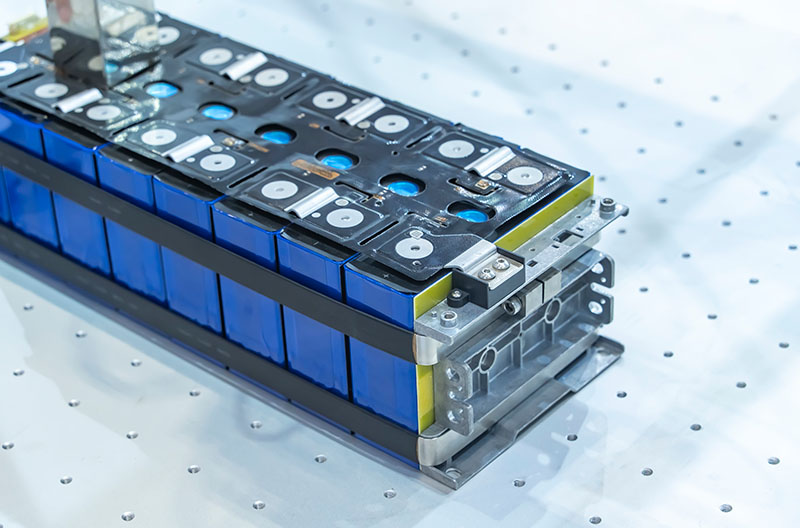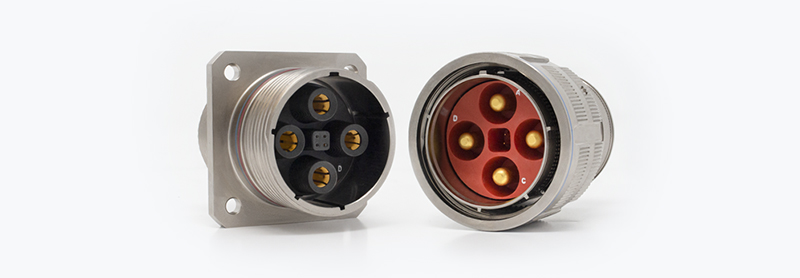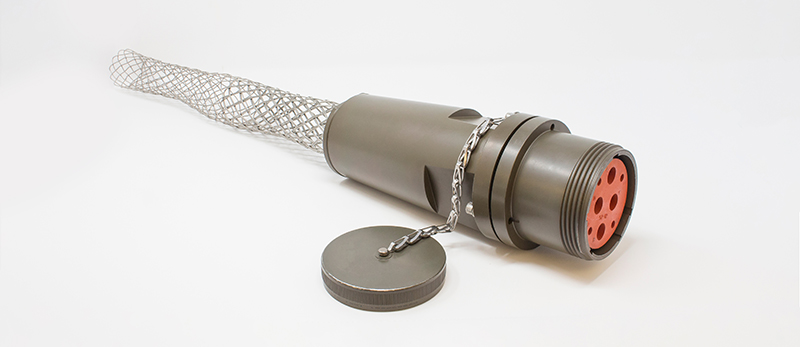
By Stephen Borgna
Marketing Communications Specialist
Hybrid-electric vehicles (HEVs) have consistently become more popular in the consumer automotive market in the years since the Toyota Prius — the world’s first mass-produced hybrid-electric vehicle — was introduced to the Japanese market in 1997.
In 2013, hybrid-electric vehicles (HEVs) made up approximately 3% of light-duty vehicles (LDVs — passenger cars, SUVs, pickup trucks, vans, and minivans) sold in the United States. By 2024, HEV sales had grown to approximately 9.6% of LDVs sold in the United States with combined HEV, plug-in hybrid electric vehicle (PHEV), and battery electric vehicle (BEV) sales reaching 18.7% of total vehicle sales by the second quarter of the year.
HEVs have established their foothold in the LDV market. Next, HEVs will begin making inroads into other industries — such as commercial air and defense — and many milestones have already been reached. The U.S. military, for instance, has set a goal to hybridize its entire fleet of non-tactical vehicles by 2035, and several hybrid-electric combat vehicle platforms are currently under development.
For these larger vehicle systems, HEVs are currently seen as the most technically attainable near-term electrification solution until the technology to support complex fully electric systems has matured. But what will it take for hybrid-electric technology — and eventually full-electric powertrain systems — to completely establish their foothold in these industries too? The subsystems that power hybrid-electrification technologies need to be optimized and perfected to scale these systems to the point where they’re not only capable of efficiently powering a 2-ton passenger vehicle, but a 70-ton main battle tank or a 200-ton wide body commercial airliner as well. Many technical challenges remain throughout core subsystems before this technology is completely feasible at this scale, though it’s clear to me that industry is making progress.
Power Requirements for Large Hybrid-Electric Propulsion Systems

HEV propulsion systems utilize an internal combustion engine coupled with an electric motor, with both systems complementing each other during the vehicle’s operation. For larger applications like those found in defense and commercial air platforms, hybrid-electric propulsion systems are intended to operate at power levels exceeding 1 MW to meet the advanced energy demands of these systems. There are ongoing research and development efforts to scale to higher power levels, however, scaling these systems presents several critical challenges.
Defense and commercial air hybrid-electric propulsion systems must operate reliably under a variety of harsh environment conditions, including extreme temperatures, high vibration, and electromagnetic interference (EMI). Designing hybrid-electric motors that can deliver high torque while remaining compact and lightweight is also hard to achieve, though progress is being made. Electric motors for aerospace platforms for instance should achieve a power density of at least 10 kW/kg, and some developers have begun to meet or come close to that benchmark.
Thermal management is another major concern that must be addressed for such complex systems. Electric motors and power electronics generate significant heat during operation especially when using high-voltage system architectures exceeding 1,000 volts. If this heat is not dissipated efficiently it can lead to component failure or thermal runaway — a potentially catastrophic scenario where rapidly increasing temperatures in one area of the system trigger rapid increases in other areas of the system resulting in runaway temperatures throughout. Advanced cooling techniques such as two-phase liquid cooling are being explored to manage high heat loads, but these systems add more complexity and weight which creates further design trade-offs that must be considered.
High Energy Density Batteries

Powering large hybrid-electric platforms means battery designs must deliver as much energy as possible given the limited size and weight that’s available, making energy density one of the most significant bottlenecks in large-scale hybrid-electric and electric systems.
While lithium-ion batteries remain the industry standard, their energy density of approximately 250 Wh/kg limits the range and payload capacity of hybrid-electric platforms. Advanced battery compositions, such as lithium-sulfur and solid-state batteries, are promising alternatives that are under development, with lithium-sulfur batteries capable of energy densities of up to 600 Wh/kg (and theoretically as high as 2,600 Wh/kg). However, these technologies are not without their challenges.
One of the primary challenges lies in energy density and power-to-weight ratios. Next-generation platforms, particularly in commercial aviation, require batteries with energy densities exceeding 400-500 Wh/kg to achieve viable range and payload capacities. At the same time, these batteries must maintain a high charge/discharge rate, known as a C-rate, to deliver power on demand for propulsion. For example, a 1 MW propulsion system may require a C-rate of 5C or higher, which can strain traditional lithium-ion cells. Lithium-sulfur and solid-state batteries are being explored for their ability to combine high energy density with rapid discharge capabilities, but scaling these technologies remains a challenge.
Battery durability and cycle life are equally critical. Batteries for larger hybrid-electric platforms must endure 1,500–3,000 charge cycles to meet commercial viability without significant capacity loss, a substantial hurdle given that current high-density lithium-ion cells typically achieve around 1,000 cycles. In addition, ensuring consistent power delivery across thousands of interconnected cells demands precise voltage balancing and current sharing that places significant operational demands on both the battery and its supporting systems. Meeting these power requirements is essential to advancing the capabilities of hybrid-electric systems in both defense applications and commercial aviation.
Battery Management Systems (BMS)

A battery management system is an electronic control unit that manages an electric or hybrid-electric system’s rechargeable battery pack. In a large hybrid-electric system, there are specific design considerations that need to be considered for the BMS. While high-energy density batteries are critical for hybrid-electric systems, their effectiveness depends on the sophistication of the BMS, and scaling these systems presents significant technical challenges.
In large-scale hybrid-electric platforms, the battery packs often operate at voltages exceeding 1,000–1,500 volts, which is necessary to support the high-power demands of propulsion systems exceeding 1 MW. A key challenge for BMS systems is the ability to manage these elevated voltages safely and effectively while maintaining precise control over energy flow. High-voltage architectures increase the risk of dielectric breakdown, which is when an electrically insulating material (known as a dielectric) loses its insulating properties and becomes conductive. This can cause catastrophic failures throughout the system if not adequately monitored and controlled. BMS systems must be designed with robust insulation and fault detection capabilities to mitigate these risks.
Another critical aspect of BMS design is current management. The propulsion systems of large hybrid-electric platforms can draw currents of several hundred amperes during peak operation, which places enormous stress on the battery cells and interconnect systems. The BMS must ensure that these currents are distributed evenly across the battery pack to prevent localized overheating or cell degradation. To address this, advanced current-balancing algorithms are being developed that can dynamically adjust energy distribution in real time based on the operational demands of the platform.
Scaling Hybrid-Electric Systems with High Voltage 38999 Connectors

Amphenol Aerospace’s High Voltage 38999 series connectors were built to redefine power distribution for next-generation electrical systems and provide exceptional performance for both legacy systems and future platforms. They’re tested to operate up to 1200 VAC or 1500 VDC without partial discharge at 50,000 feet and deliver safe and stable power transfer due to integrated safety interlock circuitry and a precise last mate, first break sequence.
High Voltage 38999 connectors were designed with dual interlock circuitry and utilize proven MIL-qualified 39029 contacts with the option for Amphenol Dualok Plugs to boost resistance to shock and vibration. They’re fully compatible with standard MIL-DTL-D38999 accessories and available in multiple shell configurations. With added options for increased amperage capacity through high-performance contacts, the HV38999 series ensures that even the most demanding power requirements are met without compromising reliability or safety.
Dependable Heavy-Duty Power Connections with Class L Connectors

Amphenol Aerospace Class L Connectors have been relied upon by manufacturers for high-power needs for years and are still the power connector of choice for heavy duty power connections in rugged operating conditions.
Developed to meet MIL-DTL-22992 specifications, Class L connectors are the largest cylindrical connector available from Amphenol Aerospace and can handle electrical loads between 40 and 200 amperes. They support both direct current and single/three-phase alternating current at 60 or 400 Hz.
These connectors ensure safety with automatic grounding and offer excellent resistance to rugged environmental factors including heat, moisture, vibration, high impact, and immersion. The Class L features double stub coupling threads for fast, cross-thread-free connections and left-hand accessory threads to reduce cable twisting and wire breakage, with gaskets and O-rings at critical surfaces providing weather-tight seals. The time-tested design and capabilities of the Class L are well-suited to meet the demands of next-generation electric and hybrid-electric platforms.
Visit Amphenol Aerospace Power Products for more information on Class L, High Voltage 38999, and Amphenol’s selection of other high-power solutions.
Stay tuned for Part 4, where we’ll take a look at charging infrastructure requirements for large electric systems.